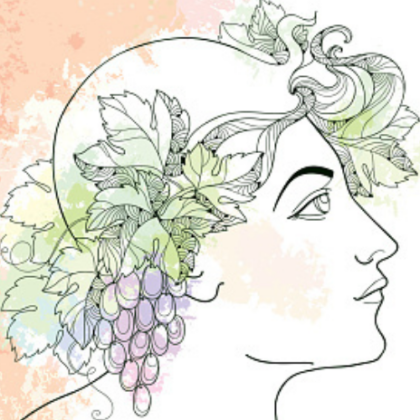Akoma Ntoaso: On Adinkra Symbols or, Bidding Farewell: On Adinkra Symbols
In the September 2023 edition of Muses – the arts blog from BJPsych International – Richard, a psychiatrist at Korle Bu Teaching Hospital, Accra, Ghana, writes about Adinkra symbols and how they depict a strong sense of community he encounters in his practice.
The Akan people of Ghana, like many other collectivist cultures, have deeply engrained concepts of interdependence and support for each other. These concepts have been passed on for generations in the Adinkra symbols. Each symbol possesses an intrinsic meaning and represents virtues, values or beliefs critical to the Akan experience of life.
No one knows precisely when they came into existence or how they came to be called Adinkra symbols. It is believed they were named after Nana Adinkra, king of the ancient Akan kingdom of Gyaman, who was instrumental in their development. They were initially printed on fabrics to produce “Adinkra cloth”, using stamps made from calabash. In addition to their symbolic value, they were a major art form in Akan culture. ‘Adinkra’ in Akan means bidding farewell.
One of the Adinkra symbols that succinctly depicts the Akan concept of unity is “Akoma ntoaso”, literally translated as “linked hearts” or “continuous hearts”. It expresses a belief that the hopes, aspirations, and emotions of all in the community are interconnected. This interconnectedness is maintained through mutual understanding, agreement and respect. Thus, all hearts are forged into one communal entity. The hopes and aspirations also never end because the hearts of each generation continue from where the previous generation left.
“Akoma ntoaso”, like the Zulu concept of Ubuntu, ensures no one sinks into despair. It is unsurprising that Akans have a word to describe sadness but none for depression. It is believed that an Akan may be sad for a while, but the strength and joy of the hearts linked to theirs will pump in joy and lift them up.
Depression and other mental health disorders are diagnosed regularly in our clinics, but Akoma ntoaso is still at play. People with mental illnesses seldom attend the clinic alone; they attend in the company of at least one relative or friend. During interactions with patients and their relatives, it is evident how the hearts and emotions of these “supporters” are joined and linked to that of the patient and have sustained them through the journey of recovery.
Friends and relatives are also a rich source of information and collateral history that enables the clinician to arrive at an accurate diagnosis. On the therapeutic end, these interconnections serve as a social support network essential in recovery. Joined hearts serve as subtle reminders of treatment plans. They also serve as gentle medication reminders. Additionally, these ‘hearts’ have listening ears and the emotional warmth of an enabling and therapeutic environment to promote early recovery. In this network of interconnected hearts, one finds resilience against mental health challenges and early recovery even when they occur.
Welcome to Muses – the arts blog from BJPsych International. Launched in March 2022, this new blog aims to highlight international art and artists, particularly from low-and-middle-income countries, with a focus on mental health. We welcome submissions for consideration, such as, comments on artwork, visual arts, literature, drama, films, podcasts, and videos. Do have a look at the instructions for blog authors for details on how to submit. General enquiries about the blog: BJPInternational@rcpsych.ac.uk
Professor David Skuse, Editor-in-Chief, BJPsych International






